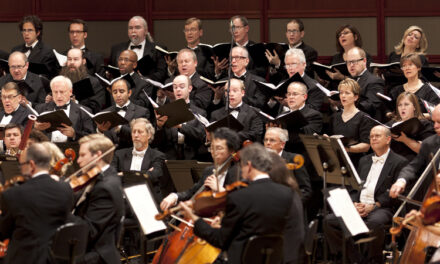This concert was a “twofer.” Before intermission, it was a Pops concert celebrating Transylvania County’s Sesquicentennial. After intermission, the sole work was Camille Saint-Saëns’ Symphony No. 3 in C minor (“Organ Symphony”).
From the first notes of Morton Gould’s “American Salute,” it was clear that having Maestro Donald Portnoy shape this orchestra for four years has yielded great results. The precision of the entries, the tone of the brass section, the intonation of the strings – all these have changed from the dubious characteristics of a mediocre community orchestra to the confident features of a very good orchestra of which the community should be justifiably proud.
The first half continued with a number of American compositions (and one Austrian composition) selected to match a well-scripted narration. This year marks the 150th anniversary of the creation of Transylvania County, formed out of parts of Henderson and Jackson Counties in 1861, just in time to be home to both Union sympathizers and Confederate sympathizers during the Civil War. The two narrators spoke between musical selections, covering the Civil War, the arrival of the railroad (1895), the “back to nature” movement, the luxury hotels, the timbering, the Great Depression, industrialization, and a final narration that pointed out the beauty of the mountains, the strength of music and crafts in Southern Appalachia, and the values that will carry this region into a promising future.
The orchestra provided a sensitive accompaniment to Sarah Moser as she sang three folksongs characteristic of the early settlers. Ms. Moser has a light voice, but excellent technical control and fine diction. Listeners could hear and enjoy the texts of “I Know Where I’m Goin’,” “Black is the Color” and “The Riddle Song.”
Aaron Copland’s version of “John Henry” celebrated the railroad with timpani growls and John Henry’s hammer strikes with chimes and triangle. The percussion section executed their parts very well. Johann Strauss II’s “Tritsch-Tratsch Polka” and Leroy Anderson’s “Fiddle Faddle” followed. “Fiddle Faddle” lacked complete precision, with some back desk violins not always with the ensemble. The audience was then invited to sing “America the Beautiful” to complete the celebration of the history of Transylvania County and look to its promising future.
The Porter Center at Brevard College has a fine Daniel Jaeckel organ and is an appropriate venue for Saint-Saëns’ Organ Symphony. Organist Timothy Shepard made intelligent registration choices that allowed the tracker organ to mesh with other orchestral instruments. Too often, this work sounds like an organ concerto trying to break out; in this case there was no doubt that we were listening to a symphony performed by an augmented orchestra.
The Brevard Philharmonic Orchestra demonstrated sensitivity to the quirks of this symphony. The long sostenuto lines in the Adagio were carried through with deliberation and poise. The brass attacks did not overpower other instruments. They were carefully modulated, except in the second movement brass fanfare where the brass appropriately swelled to balance a powerful organ passage. Every string player and every wind player seemed aware not only of his own part, but also of the other voices during contrapuntal passages.
A near-capacity audience was treated to an excellent performance. What a delight it was to see the Brevard Philharmonic Orchestra continue to grow and develop under the baton of Donald Portnoy. He is now beginning his fifth season with this orchestra, and it is performing better than ever.











